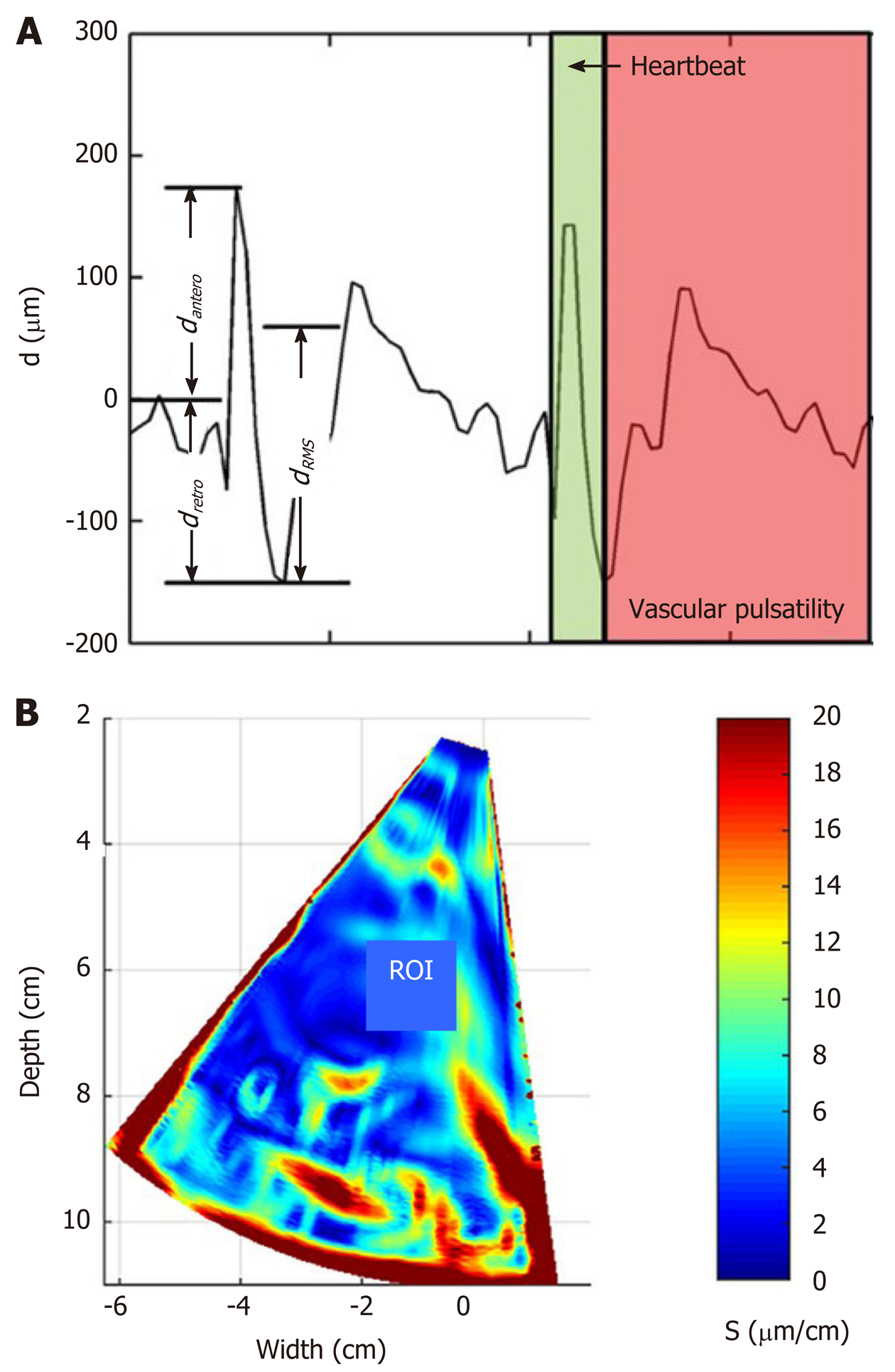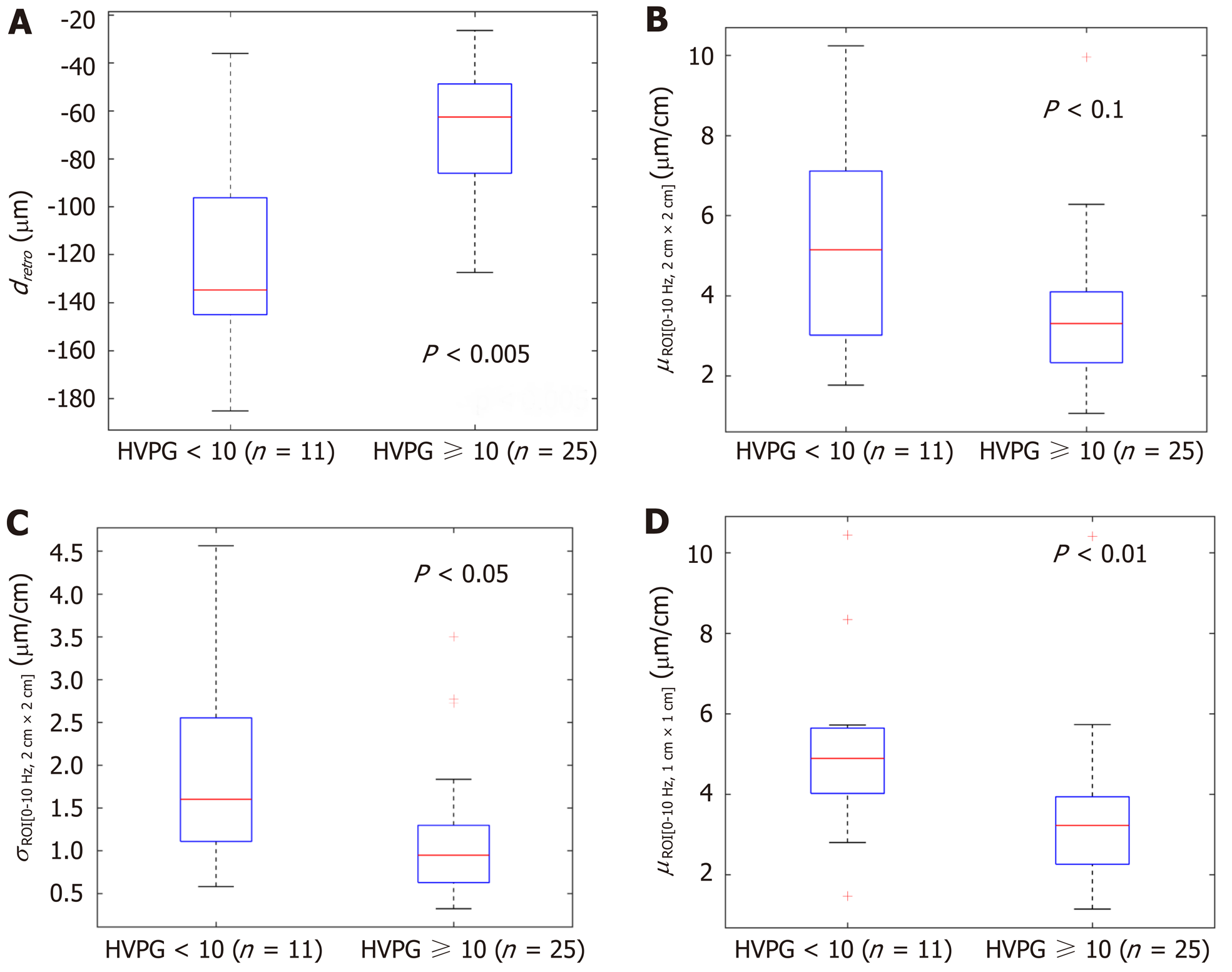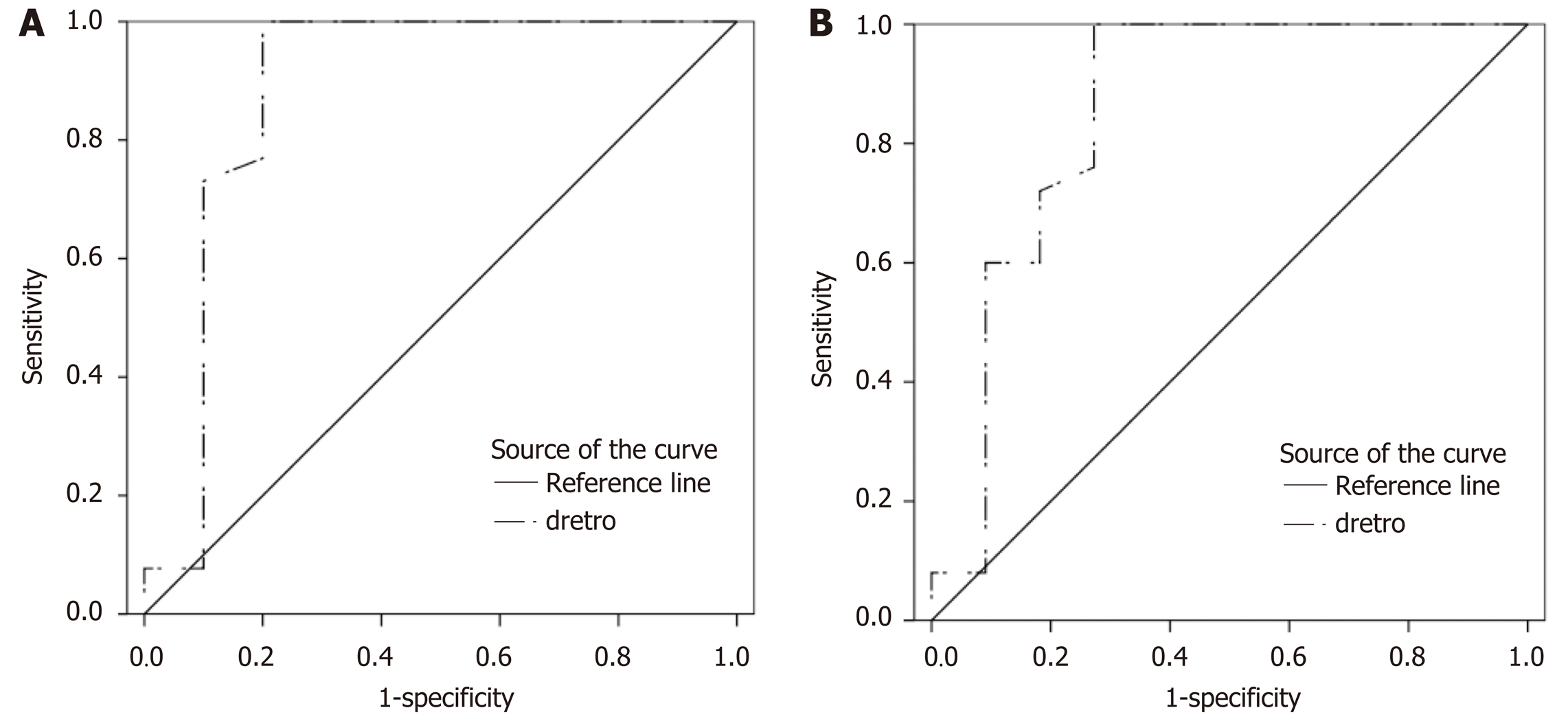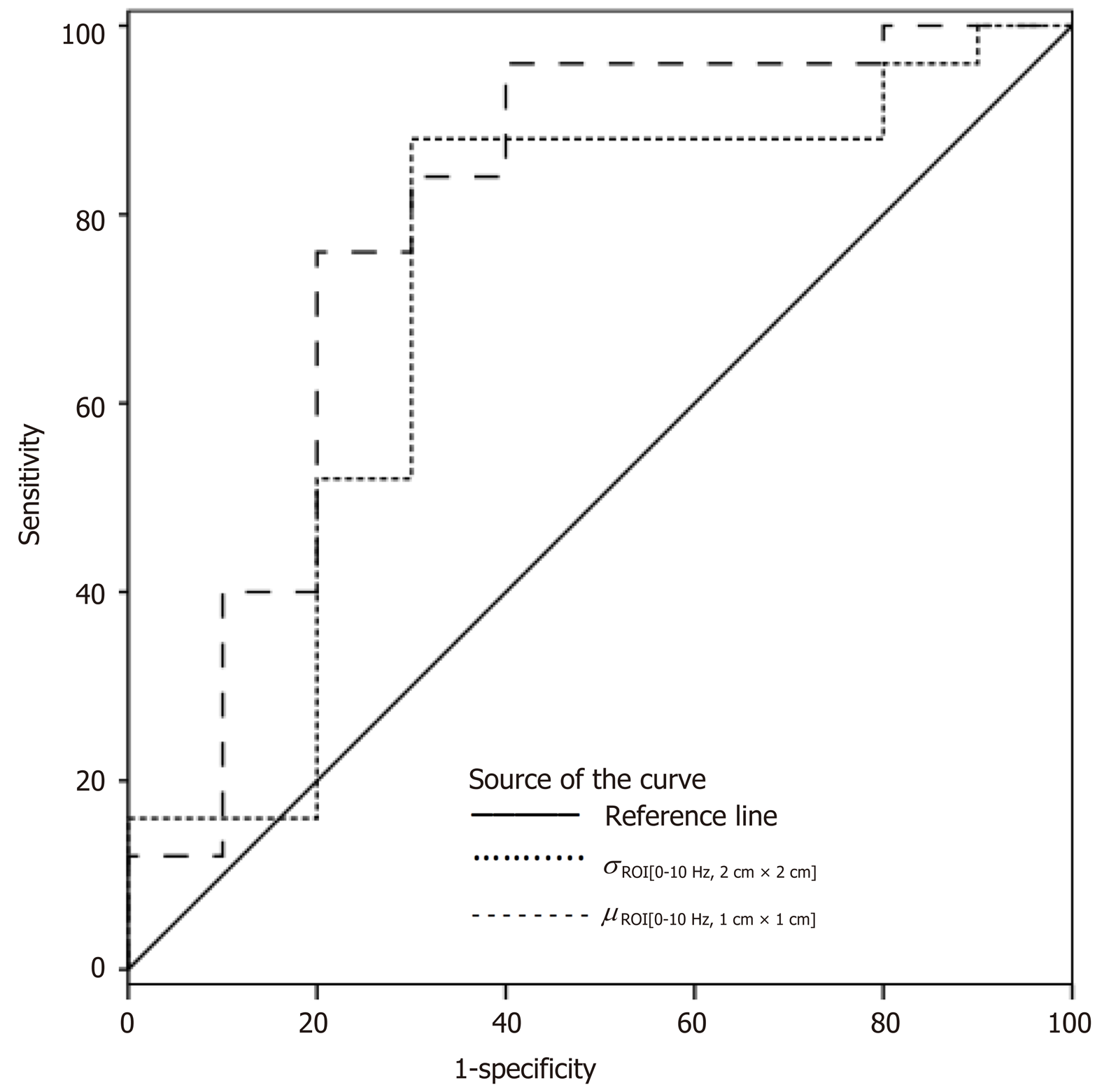Copyright
©The Author(s) 2020.
World J Gastroenterol. Oct 14, 2020; 26(38): 5836-5848
Published online Oct 14, 2020. doi: 10.3748/wjg.v26.i38.5836
Published online Oct 14, 2020. doi: 10.3748/wjg.v26.i38.5836
Formula 1
Figure 1 Example illustrating assessment of the endogenous liver displacements and strain.
A: region averaged tissue displacement signal obtained in the subsector at time interval (2…3.8) s (three parameters of region averaged displacement signal dRMS, dantero and dretro were evaluated in this study); B: the obtained strain map [amplitude coded in (μm/cm)] together with regions of interest (red rectangle, size 1 cm × 1 cm) used for the local assessment of endogenous strain. ROI: Regions of interest.
Formula 2
Figure 2 The boxplots and P values representing the derived parameters of endogenous displacements and strain in patients with and without clinically significant portal hypertension (≥ 10 mmHg).
A: dretro; B: µROI[0…10Hz, 2 cm × 2 cm]; C: σROI[0…10Hz, 2 cm × 2 cm]; D: µROI[0…10Hz, 1 cm × 1 cm]. HVPG: Hepatic venous pressure gradient.
Figure 3 The boxplots and P values representing the derived parameters of endogenous displacements and strain in patients with and without severe portal hypertension (≥ 12 mmHg).
A: dretro; B: µROI[0…10Hz, 2 cm × 2 cm]; C: σROI[0…10Hz, 2 cm × 2 cm]; D: µROI[0…10Hz, 1 cm × 1 cm]. HVPG: Hepatic venous pressure gradient.
Figure 4 Receiver operating characteristic curves of dretro parameter for the diagnosis of portal hypertension.
A: Receiver operating characteristic (ROC) curve for clinically significant portal hypertension [hepatic venous pressure gradient (HVPG) ≥ 10 mmHg]; B: ROC curve for severe portal hypertension (HVPG ≥ 12 mmHg).
Figure 5 Receiver operating characteristic curves of σROI[0–10Hz, 2 cm × 2 cm] and µROI[0–10Hz, 1 cm × 1 cm] parameters for the diagnosis of clinically significant portal hypertension (hepatic venous pressure gradient ≥ 10 mmHg).
- Citation: Gelman S, Sakalauskas A, Zykus R, Pranculis A, Jurkonis R, Kuliavienė I, Lukoševičius A, Kupčinskas L, Kupčinskas J. Endogenous motion of liver correlates to the severity of portal hypertension. World J Gastroenterol 2020; 26(38): 5836-5848
- URL: https://www.wjgnet.com/1007-9327/full/v26/i38/5836.htm
- DOI: https://dx.doi.org/10.3748/wjg.v26.i38.5836















